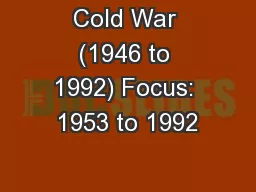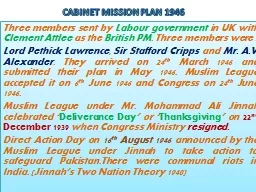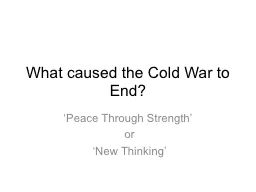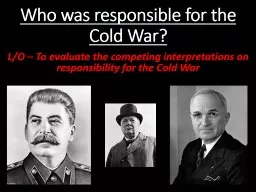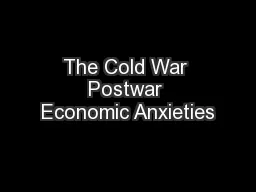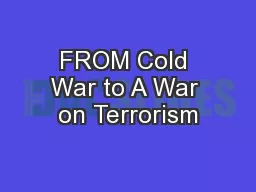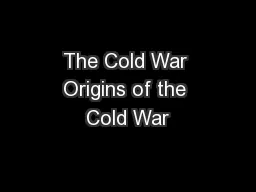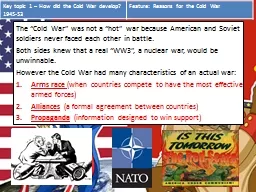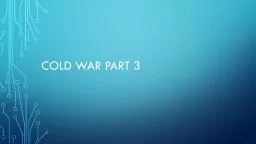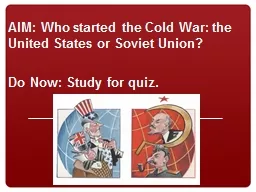PPT-Cold War (1946 to 1992) Focus: 1953 to 1992
Author : giovanna-bartolotta | Published Date : 2018-03-11
Already went over Truman Dwight Eisenhower 19531961 Brinkmanship A foreign policy theory which supported using nuclear arms as a threat against communist nations
Presentation Embed Code
Download Presentation
Download Presentation The PPT/PDF document "Cold War (1946 to 1992) Focus: 1953 to 1..." is the property of its rightful owner. Permission is granted to download and print the materials on this website for personal, non-commercial use only, and to display it on your personal computer provided you do not modify the materials and that you retain all copyright notices contained in the materials. By downloading content from our website, you accept the terms of this agreement.
Cold War (1946 to 1992) Focus: 1953 to 1992: Transcript
Download Rules Of Document
"Cold War (1946 to 1992) Focus: 1953 to 1992"The content belongs to its owner. You may download and print it for personal use, without modification, and keep all copyright notices. By downloading, you agree to these terms.
Related Documents

